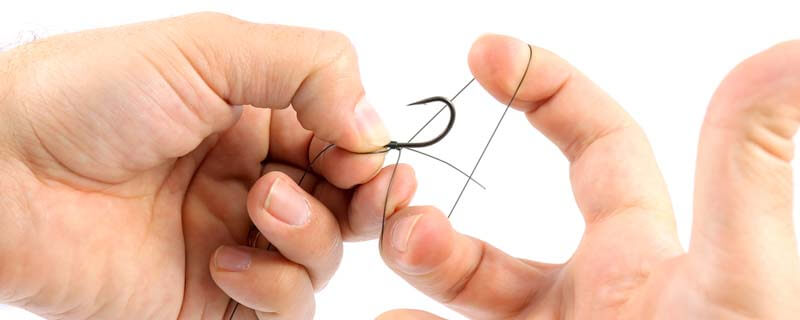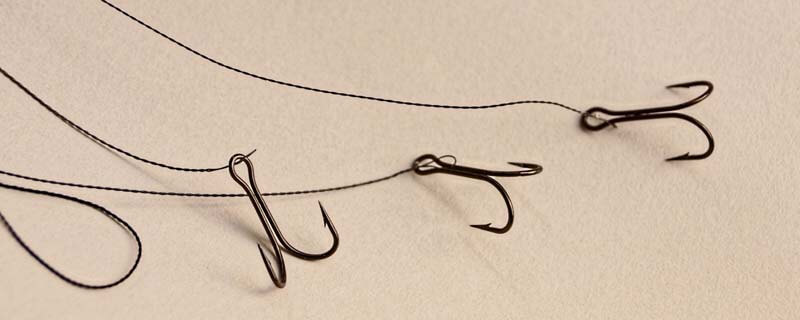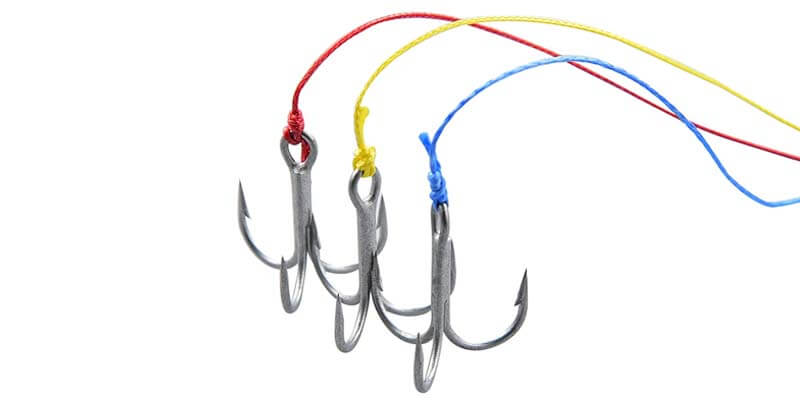One of the best pastimes that people will continue to enjoy is fishing. There is hardly anything that beats sitting by the water and enjoying the gentle breeze that emanates from the liquid body. What’s more, it is always a beauty seeing different aquatic creatures and marveling at nature’s diverse attributes.
The only factor that would make your fishing expedition complete is landing fishes of varying sizes and numbers. And one of the major determinants that make this happen is learning how to tie a fishing hook. If you want to have a good fishing encounter, your materials need to be wholly adapted to your needs.
And learning how to tie a hook on a fishing line is an effective means to catch much prey. It would interest you to learn that a fishing hook is one of the most essential fishing accessories in addition to a fishing reel and a rod. This is one of the primary reasons why anglers are intentional about the type of fishing hook they use.
However, if you use the best and appropriate fishing hook without learning how to tie a fishing hook, it is fruitless. Knowing how to tie on a fishing hook is an ideal complement for using a fishing hook that matches your needs.
How to Tie Fishing Hooks and the Popular Knot Types

1. Clinch Knot
If you are seeking methods to tie fishing hooks and you don’t know how to, one of the ways you will find fascinating is the clinch knot. Several professional anglers like using the clinch fish hook knot to tie their hooks because of its ease. If you have plans to catch large fish, the Improved Clinch knot is ideal, and it has been tested and proved to be proficient and effective.
You can tie the Clinch knot by wrapping the loose end of the line, round the line five to six times. Then, you thread the loose end via the loop at the hook’s eye. Not every angler agrees with the conventional saying that the enhanced Clinch Knot is ideal and improved. Some anglers prefer to stick with the first Clinch knot when they are using smaller-metered hooks.
Also Read: How to Sharpen Fish Hooks – Tips for Your Effortless Work
2. Turle Knot
The Turle knot is another popular option that is very effective when fishing with a thin line and a small hook. For people who indulge in fly fishing, they will prefer the Turle Knot. If you want to tie the Turle knot, all you need do is pass the line with thread via the hook or fly’s eye. Then, tie an overhand knot loosely before passing the loop above the hook’s end.
3. Palomar Knot
Another notable knot for tying fish hooks is the Palomar Knot. And the beauty about this knot is, it is one of the best to use if you’re working with the braided line. Many anglers prefer the Palomar knot because of the strength it offers.
It is correct to state that it is in the top-tier of the strongest fish hook knots. If you want to tie the Palomar knot, double your line to form a loop. Then, form an overhand knot. Run the loop above the hook’s end and tighten.
4. Blood Knot
Blood Knot is one of the knots used as one of the easiest ways to tie a fishing hook. The Blood Knot is not really for attaching your line to a fishing hook. Instead, the Blood Knot attaches two fishing line pieces. The Blood Knot is ideal if you have an already-strung fish hook and you want to connect to repair a spoilt fishing line or if you want to connect it to a long fishing line.
If you want to tie a blood knot, begin by wrapping the first line around the second line around five-seven times. Then, cloak the second piece around the first piece five-seven times. Complete it by tightly pulling both loose ends in the middle.
5. Uni Knot
If you want to secure a monofilament line to a hook, the Uni Knot is an ideal pick. The Uni Knot is also referred to as Snell Knot that allows you to produce a straight and even pull. The Uni Knot also helps to maintain the strength of your fishing line. If you want to learn how to tie a fishing hook for carp with the Uni Knot, cloak the loop around the hook between five-ten times. Then, draw the line up till the loop is tightened.
6. Surgeon Knot
The Surgeon Knot is a trendy knot, also called the Double Surgeon’s loop. The Surgeon Knot has some similarities with the Blood Knot, mainly that the knot is great in attaching two pieces of line to each other. This Surgeon knot can be employed in creating a loop at the line’s end. The Surgeon knot works fine with a standard fish hook tying tool that anglers use.
And one of the reasons why several anglers love the Surgeon knot is because it forms a reliable and firm loop at the line’s end. If you wish to tie the Surgeon’s knot, begin by doubling the fishing line and forming an overhand-knot. After this, run the same loop across the knot’s hole one more time before you tighten.
Also Read: Best Catfish Reel – Top Option in the Market
Regular Fishing Hooks Type for Professional Anglers and Beginners
Several tying fishing hook styles are available today, which might make it challenging for a beginner to pick the right one. Hence, I have outlined some standard fishing hook types that will help you select the ideal one. One crucial point to always consider is, the hook’s size and the size of the fish must complement each other so that your efforts would not be fruitless.
1. Baitholder Hooks
One of the toughest things you will face as a professional angler or beginner is, sustaining your slippery and sticky bait on your hook. There have been various design innovations to ensure hooks are increasingly efficient. For the Baitholder hooks, it is a tool you can entirely rely on to aid you in firmly holding your baits.
Baitholder hooks come with long shafts lined with baits that keep the baits firmly and safely hooked. Also, Baithholder hooks come as snells, fixed to a line with looped ends, and are ready to be attached with a snap or knot.
2. Double Hooks

The double hook design is similar to a treble hook. However, it comes with two points rather than three. If you want to capture a trailer, the double hook is a perfect reliance tool. Double hooks also come in handy for baits that are soft and thick.
A perfect example is floating frogs. Double hooks make it challenging for the fish to remove the bait from their mouth because they would be hooked in the process. Thanks to the top-lip hook that strengthens this feature.
3. Circle Hooks
The concept behind the manufacturing of circle hooks is to use the hook-point to penetrate the fish’s mouth through the corner. This is possible when the fish makes attempts to eat the bait. For the circle hook, there is no need to set it. All you need do is reel in when the fish strikes the bait.
With the circle hooks, you don’t need to jerk, and it has a unique design that allows for rotation while in the fish’s mouth, whilst striking its jaw corner. The Circle hooks are great for catching fishes that live in reefs, and they are divided into two models: Offset hooks and non-offset hooks.
The offsets hooks are placed at an angle to a shank. In comparison, the non-offset hooks have their points in alignment with the shank. If you want to catch a pike or a catfish, a circle hook is great for this and this is one of the important fishing hook tying tips.
The fish will typically take in the bait and the hook, even if your eyes are not on the tip of your rod. If you get the signal that the fish has swallowed the bait, you need to raise the rod tip and begin to reel the line.
Also Read: Fly Fishing VS Spin Fishing – Tips and Techniques
Conclusion
Having read this guide, you will observe that how to tie a fishing knot is not as complicated as you think. The exciting part about this is, anybody can learn how to tie a fishing hook provided they are ready and dedicated to learning.
With the knot methods mentioned in this guide, you can tie a fishing hook even if the conditions are not favorable. And you can be sure that it would come out fine. One of the most crucial skills you must possess as an angler is how to tie a fishing knot, and this guide helps you learn effectively.




